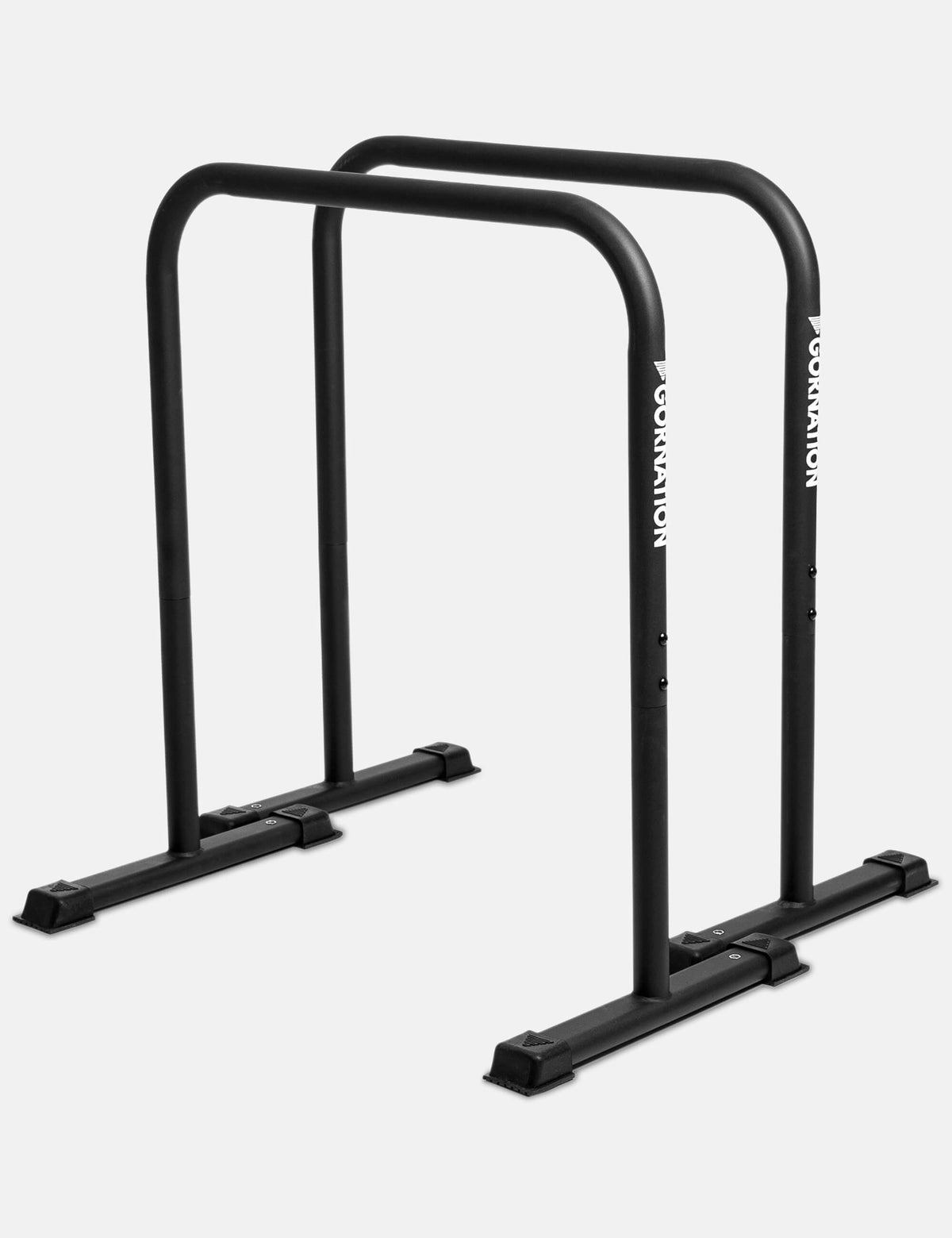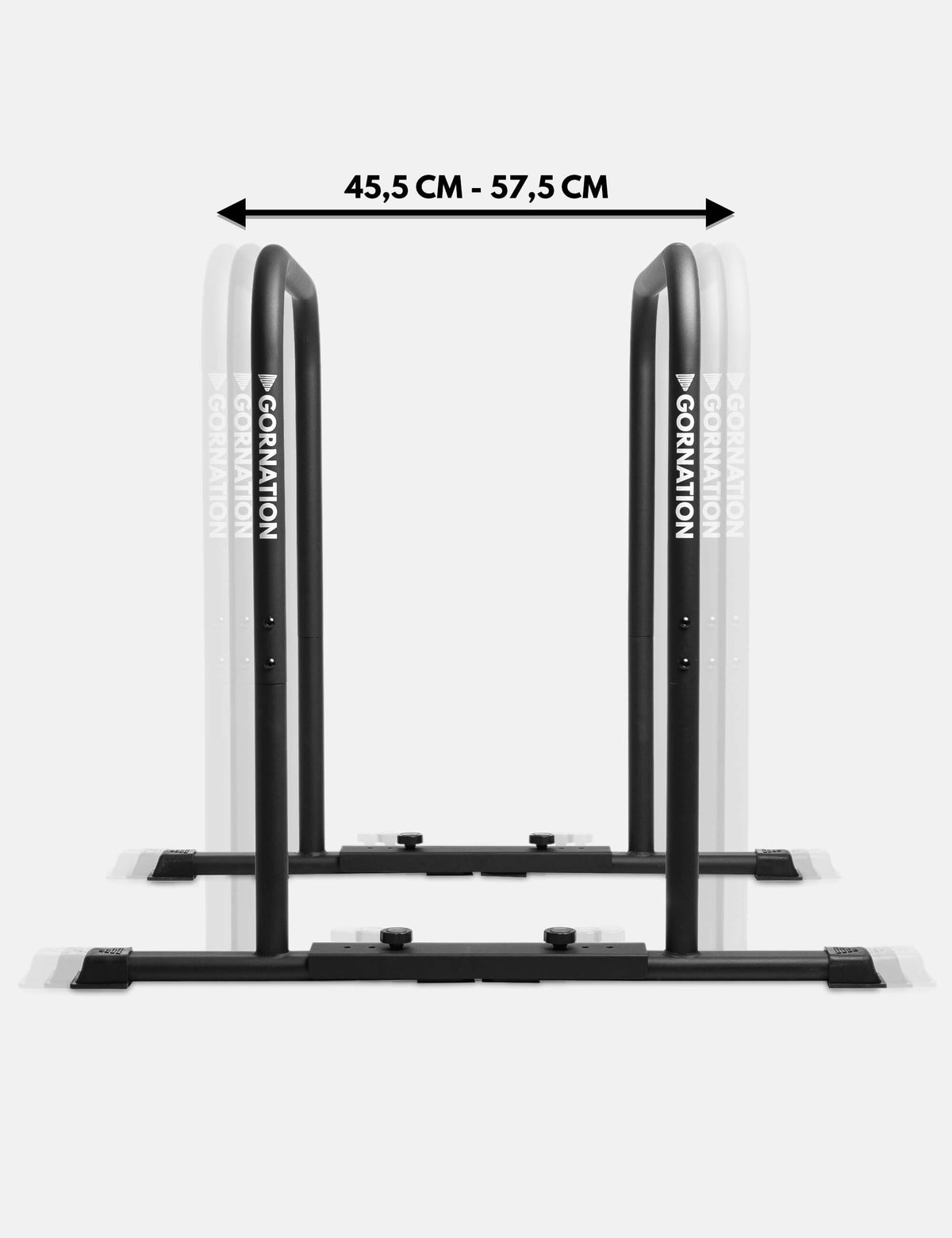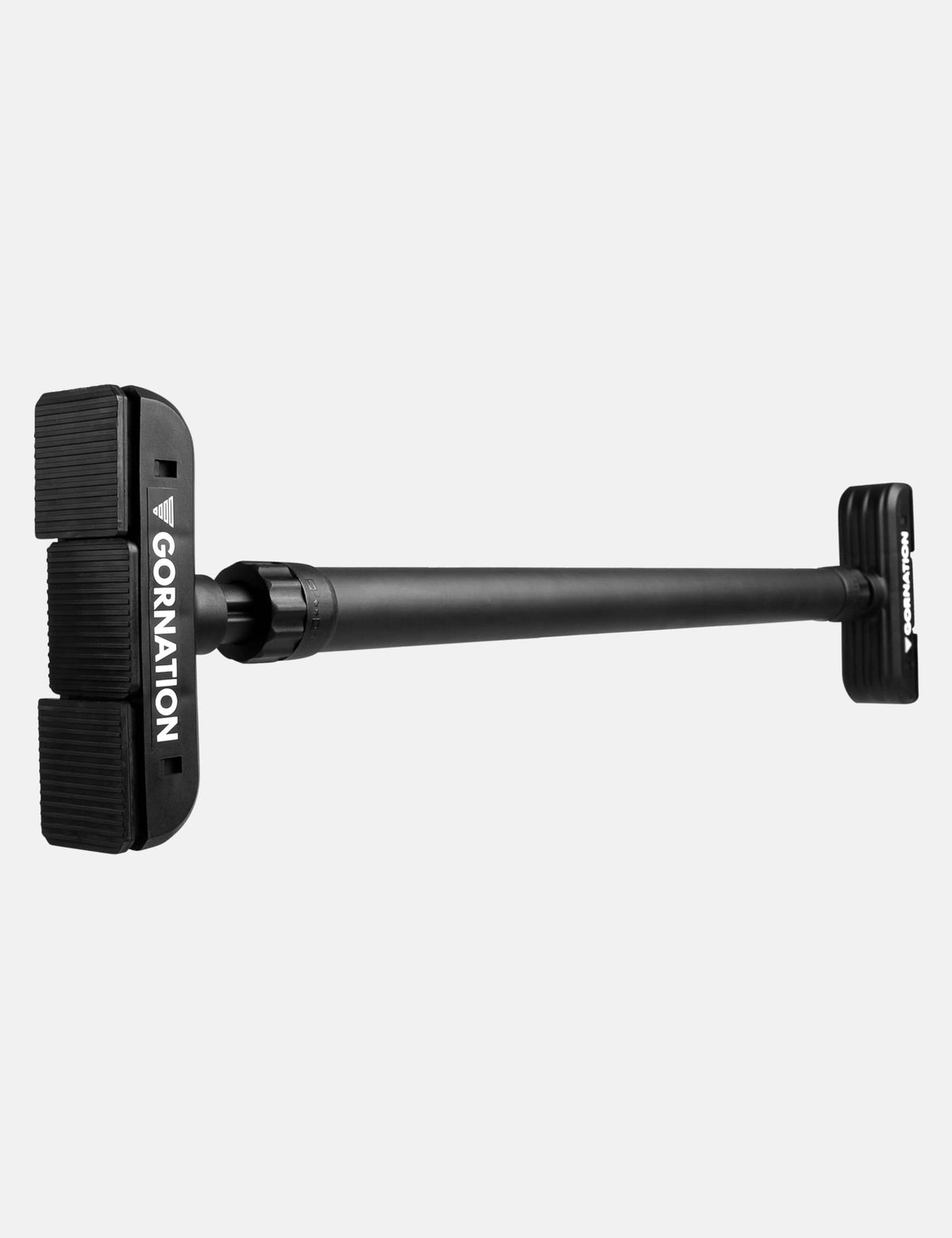How to do the exercise
The L-Sit to Handstand is a really advanced calisthenics skills. It requires full control in both the L-Sit and the Handstand before attempting the transition. The goal is to generate controlled momentum from the L-Sit into a stable handstand. Here’s how to perform it correctly:
1. Starting Position
Begin in a solid L-Sit on Parallettes, Dip Bars or the floor. Keep your legs straight, core fully engaged, and shoulders active. Make sure you can comfortably hold this position before moving on to the transition.
2. Initiating the Swing
From the L-Sit, create momentum by leaning your torso slightly forward and allowing your legs to swing upward. The more momentum you generate, the easier the transition becomes – but keep the movement controlled to avoid losing balance.
3. Transition to Handstand
As your legs rise, continue leaning forward to stack your shoulders over your hands. Push strongly through your arms and engage your core to guide your body into a vertical position. Aim to lock out your elbows and stabilize once inverted.
4. Stabilizing the Handstand
Once in the handstand, adjust your balance by engaging your fingertips and keeping your body tight. Focus on maintaining a straight line from wrists to toes. Hold the position before carefully lowering back down or repeating the transition.
Recommended Equipment for L-Sit to Handstand
Benefits of the exercise
The L-Sit to Handstand is a powerful exercise for building control, balance, and full-body strength:
-
Develops advanced core and shoulder strength
-
Improves balance and control in dynamic handstand entries
-
Enhances body awareness and coordination
-
Teaches efficient use of momentum for skill transitions
- It looks amazing
This makes it a top-tier progression for athletes aiming to master complex calisthenics movements and improve overall body control.
Main muscles used
The L-Sit to Handstand mainly targets:
-
Core muscles (abs, hip flexors, obliques)
-
Shoulders (deltoids)
-
Triceps
-
Upper back and stabilizers (trapezius, scapular muscles)
This full-body skill ensures balanced strength development and highlights the importance of control in advanced calisthenics training.
If you're looking for other calisthenics exercises, check out our Youtube video:
Mistakes to avoid
Common mistakes when performing the L-Sit to Handstand include:
-
Lack of basics: Attempting the exercise without mastering the L-Sit and Handstand first.
-
Relying only on momentum: Too much swing reduces control and stability at the top.
-
Not leaning forward enough: Without proper lean, the hips won’t stack over the shoulders.
-
Collapsed core: Losing core tension leads to bent legs or an arched back.
-
Wrist discomfort: Ignoring wrist mobility and support can cause pain or limit progression.
- Elbow angle control: Don’t bend your elbows more than 90°. Going deeper makes it extremely hard to press back up.
Progress gradually by improving both static holds and transition control. Focus on clean, controlled repetitions instead of rushing the movement.
Discover more Exercises
Looking for more ways to level up your training? Check out our full exercise overview or try these effective exercises that perfectly complement your training:
Please read our legal disclaimer before starting your workout.
 | 5.000+ Reviews
| 5.000+ Reviews
 Free EU Shipping above 100€*
Free EU Shipping above 100€*
 Worldwide Tracked Shipping
Worldwide Tracked Shipping













